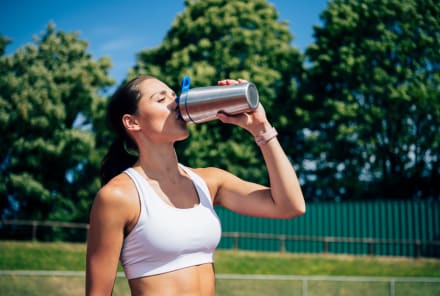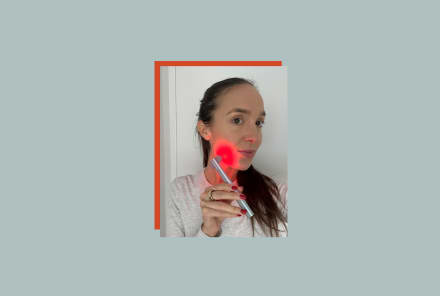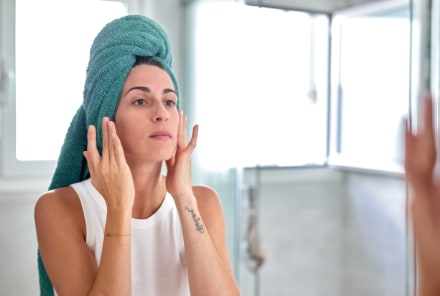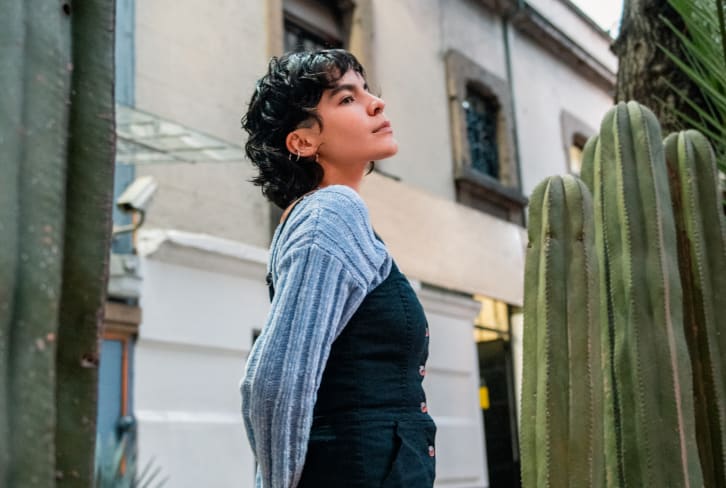Advertisement
Meet I-Turn: The Latest Japanese Ecological Philosophy Poised To Go Global

Julia Plevin is the founder of The Forest Bathing Club and author of The Healing Magic of Forest Bathing. She designs and guides transformational eco-spiritual experiences around the world. She has more than a decade of experience guiding individuals and groups of people into the forest, where the practice of shinrin-yoku helps calm the mind and create space for wellness and prosperity. Through studies with Shamanic Reiki masters, Shugendo Buddhist monks, Mayan elders, Bhakti yogis, and Renewal rabbis, she has developed a unique program that both respects and transcends tradition and brings us back into direct connection with Source. Julia is passionate about empowering people to tap into Nature as a way to heal themselves and the Earth. Her work has been covered widely in outlets such as CNN, Outside Magazine, Business Insider, The New Yorker, and Sierra Magazine, and the Forest Bathing Club has more than a thousand members from around the world.
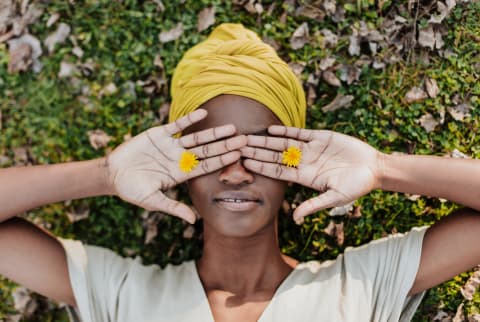
If you're not yet hip to forest bathing, it's a practice of going to nature as a way to heal. The term comes from the Japanese word shinrin-yoku, which literally means "bathing in the forest atmosphere." The practice was developed in the 1980s and is based on the scientifically proven ways that just being in nature improves our physical, mental, and spiritual health.
If you like the sounds of forest bathing, you'll love I-Turn.
I-Turn describes people who moved from urban cities to the rural countryside.
I first heard of the I-Turn a few years ago; I was traveling through Japan to do research for the book I was writing on forest bathing.
The I-Turn (or U-turn if you're someone who was raised in a rural area and then returns to a rural area) is part of the country's internal migration program. In some regions of Japan, authorities actually hand out cheap homes and cash incentives to encourage moves from cities to rural farming towns where reproductive rates have fallen and young people are long gone.
According to Fujitsu Research Institute, nearly 14% of the housing stock, about 8.5 million homes, are vacant in Japan. In some remote areas, entire hamlets are ghost villages. By 2040, they've forecast that 28,000 square miles of land will be empty and unclaimed.
There are banks set up to match prospective buyers with elderly homeowners and vacant properties as well as to offer subsidies for repairs.
The social and ecological benefit of living closer to nature.
When I was in Japan, it dawned on me that I-Turn is the natural successor to forest bathing. If forest bathing is about taking a break from city life to temporarily connect to nature, I-Turning is changing your whole way of life in order to live in full connection to nature. Forest bathing is the doorway into a whole world of nature-connected living. It's a great first step, but there's a lot further to go.
This turning back to the land is part of what deep ecologist and Tibetan Buddhist Joanna Macy refers to as "The Great Turning." This is the massive shift from the Industrial Growth Society to a way of living that is ecologically and socially just.
Like Buckminster Fuller said, our prerogative on this planet right now is to, "Make the world work, for 100% of humanity, in the shortest possible time, through spontaneous cooperation, without ecological offense or the disadvantage of anyone."
In other words, when we work to heal the Earth, we in turn heal ourselves.
My own I-Turn experience.
Ever since the term planted itself like a seed in my mind back in 2017, I've been subconsciously and now consciously figuring out how to make an I-Turn myself.
And last year, I finally traded in city life to move to rural Southern Oregon, where I live 35 minutes outside a small town and along the way have eaten so much humble pie that you would think humble was a fruit that grew abundantly on trees. I moved to a place where no one cares how many Instagram followers you have, what fancy education you received, how stacked your résumé looks, or what brand of designer jeans you're wearing.
Rural living and farming come with an entirely different set of challenges than urban living.
For me, at this time, I'm ready for the lessons and challenges of connecting deeper to the rhythms and cycles of the Earth, even as it gets harder and more unpredictable with climate chaos. I've delved into permaculture and seed saving. I'm currently saving up in the hopes of buying land to steward, and in the meantime, I'm studying everything from forestry to herbalism and eagerly receiving any mentorship I can find. I'm trying to piece together a way of life that once was on land that is not my ancestral land but rather land that was taken from people who once tended it with love and care.
I think a lot about what environmental activist Winona LaDuke's father once told her, which she shares in a TEDx talk. He said to her, "You know, Winona. You're a really smart young woman, but I don't want to hear your philosophy if you can't grow corn." That's how I feel. My work falls short and empty without the earth-based skills to back it up.
Maybe these are famous last words, but I believe that we find our purpose with our hands on the Earth, not on a keyboard.
How you can start going back to the land without even moving.
In the United States, unlike in Japan, it's pretty challenging for young people to get funds to move back to the land. Our systems are not set up to support this shift, and the average cost of farm real estate rose 47% from 2009 to 2017, according to government data.
And yet, as COVID continues to rage, many city folk are looking to move to smaller towns and more remote places, especially ones with remote jobs. Not all of us feel ready or able to jump ship on city life in order to head for greener pastures. And that's OK.
For some of us, the O-Turn, which refers to making circles between cities and rural places, might be the move. For others, it's more about bringing Nature into the city. And there are so many ways to do that:
Tune in to what's growing around you.
What are the types of trees and plants in your neighborhood? Oftentimes, the most healing plants are found along roadways because they are popping up to heal the land and the beings around there. Get to know the native species in your area. Learn what medicines are growing under your nose.
Grow something...anything!
You can grow your own sprouts in a windowsill all winter long. Houseplants are a nice gateway too.
Sit on the couch and learn.
Some of my favorite resources for learning about the power of connecting to land include the book The Fifth Sacred Thing, the documentaries Kiss the Ground, The Final Straw, and The Biggest Little Farm, and the For the Wild podcast.
To dive deeper, look into permaculture courses offered through Permaculture Institute of North America, Ecoversity, or Earth Activist Training, or attend the virtual Bioneers Conference, happening this year at the beginning of December.
Support organizations that are leading the charge.
Sogorea Te Land Trust—a women-led organization working to reclaim land in the Bay Area where Ohlone people have lived for centuries—and Soul Fire Farm—an Afro-Indigenous-centered community farm committed to uprooting racism and seeding sovereignty in the food system—are great ones to start with.
Shop at farmers markets or subscribe to a CSA.
Learn where your food comes from, and practice eating as locally and seasonally as possible. Begin to understand the issues in your bioregion.
Whatever your path may be, we can each do our part to help regenerate the Earth, our communities, and ourselves. There's a lot of work to be done!
Watch Next
Enjoy some of our favorite clips from classes
Enjoy some of our favorite clips from classes
What Is Meditation?
Mindfulness/Spirituality | Light Watkins
Box Breathing
Mindfulness/Spirituality | Gwen Dittmar
What Breathwork Can Address
Mindfulness/Spirituality | Gwen Dittmar
The 8 Limbs of Yoga - What is Asana?
Yoga | Caley Alyssa
Two Standing Postures to Open Up Tight Hips
Yoga | Caley Alyssa
How Plants Can Optimize Athletic Performance
Nutrition | Rich Roll
What to Eat Before a Workout
Nutrition | Rich Roll
How Ayurveda Helps Us Navigate Modern Life
Nutrition | Sahara Rose
Messages About Love & Relationships
Love & Relationships | Esther Perel
Love Languages
Love & Relationships | Esther Perel

